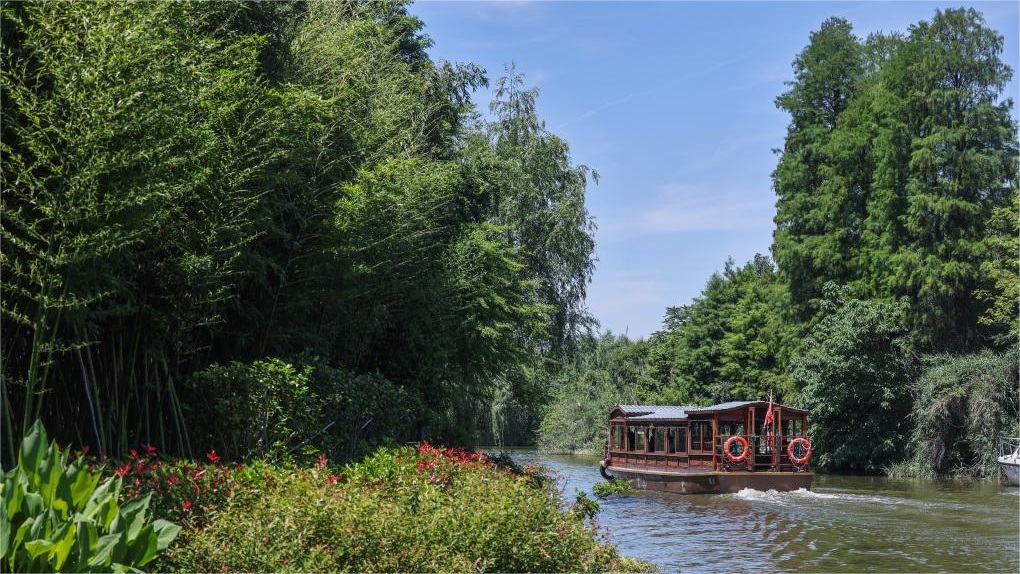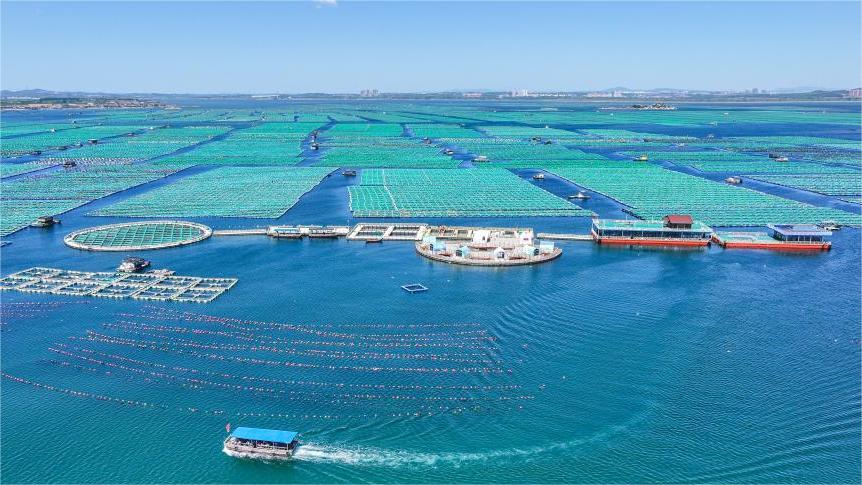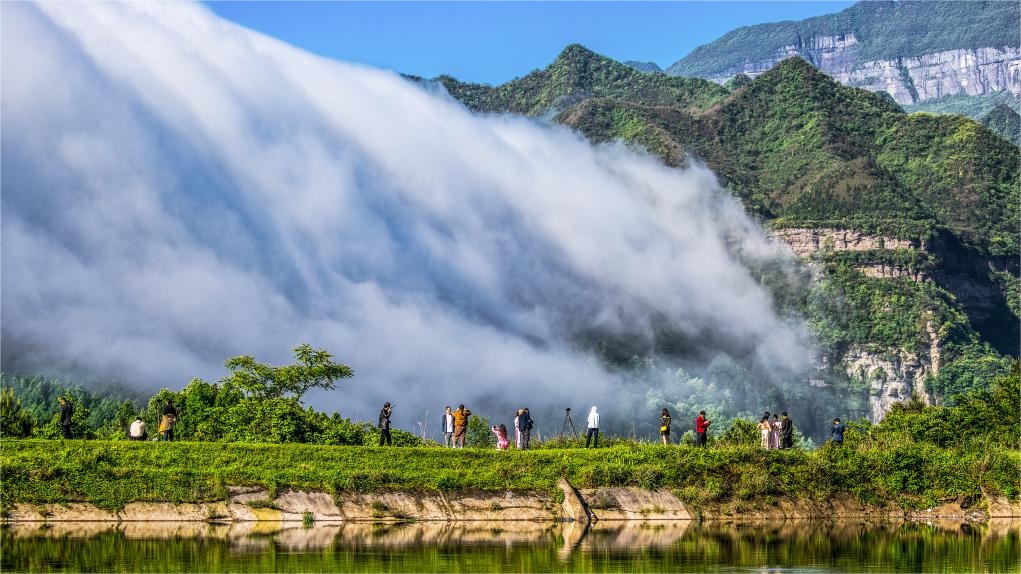Exploring glory of 5,000-year Chinese civilization at Liangzhu site
Editor's Note: Chinese civilization has moved forward with enduring vitality throughout history. Discoveries at the Liangzhu archaeological site that reveal the origins of Chinese civilization, along with the ancient Chinese characters on oracle bones from the Yin Ruins and the cultural treasures of the Sanxingdui Ruins, all testify to China's splendid civilization.
Chinese civilization, spanning ancient and modern times, radiates brilliance. It is deeply rooted in the nation's identity and the wisdom of its people. To truly understand China, one must grasp the essence of this civilization.
People's Daily Online presents the "Tracing the origins of Chinese civilization" series of promotional videos. These videos explore the treasured aspects of Chinese culture, decipher the ancient codes of civilization that have been passed down over thousands of years, and share how China's ancient civilization continues to thrive in modern times.
The Liangzhu site represents the 5,000-year history of the Chinese civilization and is a treasure of world civilizations, General Secretary Xi Jinping said in his congratulatory letter to the first Liangzhu Forum in December 2023.
Located in Yuhang district, Hangzhou, east China's Zhejiang Province, the Archaeological Ruins of Liangzhu City were once the center of power and belief of Liangzhu culture, and were inscribed on the UNESCO World Heritage List in 2019. The property features a large city site, advanced rice cultivation practices, and a complex water conservancy system. The ruins reveal an early regional state in the Taihu Lake basin in the lower reaches of the Yangtze River.
"It is a great honor to participate in the exploration of such an important archeological site"
Since the 1930s, generations of archaeologists have gradually lifted the mysterious veil over Liangzhu ancient city through exploration and excavation.
Fan Chou, a staff member of the Liangzhu Site Archaeology and Conservation Center, has carried out archaeological work on the water conservancy system of the Liangzhu site.
"In the early stages, I was responsible for aerial photography and surveying of the site. Starting in 2016, I conducted excavation and survey work at some ruins surrounding the site," Fan said.
The water conservancy system of the Liangzhu site was very complex and was used to protect the ancient city, facilitate irrigation downstream and transport timber.
"The planning of dams was likely completed in the early days of the Liangzhu ancient city. The massive water conservancy system and large-scale urban planning show us the high level of civilization during the Liangzhu period," Fan said.
"I love archaeology. There are many unknowns underground, leading to a lot of uncertainty. Every day brings surprises and new discoveries," Fan added.
The Archaeological Ruins of Liangzhu City were a major archaeological discovery by China in the 20th century and an important cultural site that was a testament to the country's 5,000-year civilization.
"The inclusion of the Archaeological Ruins of Liangzhu City in the World Heritage List in 2019 marked international recognition of China's 5,000 years of civilization. It's really critical," Fan said.
"After I had been involved in archaeological work at the Liangzhu ruins for 10 years, they were inscribed on the UNESCO World Heritage List. I have taken part in surveys and excavations of the Liangzhu ancient city and its peripheral water conservancy system. It is a great honor to participate in the exploration of such an important archeological site," Fan added.
"To understand the future of a civilization, we must first grasp its origins"
The Liangzhu site is of great importance, as it paints a vivid picture of the time-honored Chinese civilization.
The Liangzhu Museum houses a comprehensive collection of precious artifacts from 5,000 years ago, including jade pieces, stone tools, and pottery tools, comprehensively, vividly and accurately showcasing the archaeological findings from the Liangzhu ruins and the value of Liangzhu cultural heritage.
"The Liangzhu Museum displays the value of Liangzhu to visitors, allowing them to witness the continuity of Chinese civilization," said Huang Li, deputy curator of the Liangzhu Museum (Liangzhu Research Institute).
"To understand the future of a civilization, we must first grasp its origins," Huang said, believing that Liangzhu represents a key piece of evidence showing China's 5,000 years of civilization.
General Secretary Xi Jinping visited the Archaeological Ruins of Liangzhu City twice and provided important instructions and guidance on seven occasions regarding the protection of the site and its application for World Cultural Heritage status.
In 2016, four renowned archaeologists wrote to Xi to express their hope that the Liangzhu site would be included on the UNESCO World Heritage List at the earliest possible date. Xi issued an instruction stressing that the bidding for world cultural heritage should[1] be conducive to highlighting the value of Chinese civilization, history, and culture, manifesting the spiritual pursuit of the Chinese nation, and presenting a panoramic and true view of ancient and modern China to the world.
"This greatly facilitated our application for World Cultural Heritage status," Huang said.
"In carrying out our work at Liangzhu, we are following the directive of 'presenting a panoramic and true view of ancient and modern China to the world’," Huang noted.
Huang said the museum is introducing Liangzhu culture to schools, in the hope that it will help youths build cultural confidence through the ancient civilization.
Additionally, Huang hopes to promote shared economic prosperity in the protected area through the Archaeological Ruins of Liangzhu City park and the Liangzhu Museum to make it a cultural highland and a demonstration zone for shared economic prosperity.
"I can prove to them that Chinese civilization truly spans 5,000 years"
At the Liangzhu Museum, a bilingual docent team of volunteers shares the wonders of ancient Liangzhu culture with visitors from all over the world. Emma Chen is one such volunteer.
Chen came to China after graduating from university in the U.S., and has been living in Hangzhou for nearly a decade. Before she took on the role as a bilingual volunteer tutor at the Liangzhu Museum, she frequently visited the museum, and all the staff members were familiar with her.
"One day, a staff member asked if I wanted to become a volunteer, which excited me because it's something I had always wanted to do. To put it in Chinese, it's called 'yuanfen'," Chen recalled, saying it was fate that led to her becoming a tutor at the museum.
Chen said she has made great efforts to accurately convey the story behind each artifact to visitors, reading and studying everyday to learn more about the museum and its exhibits.
Chinese and English explanations have significant differences, she pointed out, noting that she needs to provide more detailed explanations for visitors from other countries, as they have different cultural backgrounds and know little about Liangzhu culture.
Once, after hearing her explanations, a foreign visitor told Chen that many people don't know the story of Liangzhu, and it deserves more attention. Deeply touched by these words, Chen said that's exactly the purpose of her volunteer work.
The ruins of the Liangzhu ancient city provide physical evidence of China's civilization spanning over 5,000 years, which is one of the reasons why Liangzhu culture fascinates Chen.
"During my university studies in the U.S., someone said the 5,000-year Chinese civilization is just a legend, and I didn't know how to refute it at the time. But after coming to Liangzhu, I can prove to them that Chinese civilization truly spans 5,000 years," Chen said, adding that she feels very happy and takes great pleasure in sharing stories of Liangzhu culture with every visitor.
Photos
Related Stories
- Zhejiang's national wetland park makes efforts to improve ecological environment
- In pics: Farmers harvest kelp in Ningbo, E China's Zhejiang
- Shuanglin ancient town at sunset
- Flood, typhoon disaster relief drill held in E China's Zhejiang
- Keqiao Textile Expo (Spring) kicks off in Shaoxing, China's Zhejiang
Copyright © 2024 People's Daily Online. All Rights Reserved.









